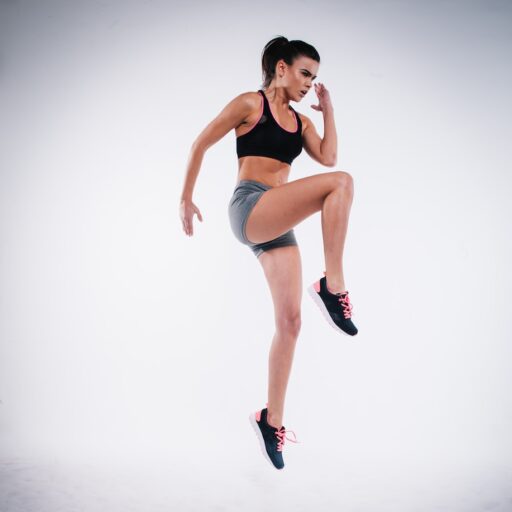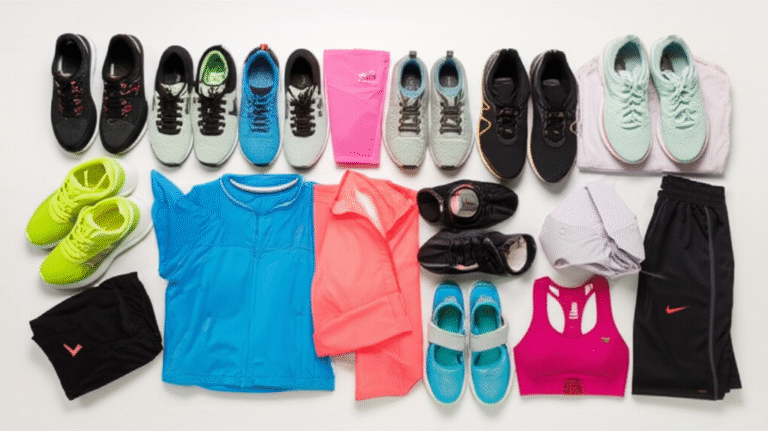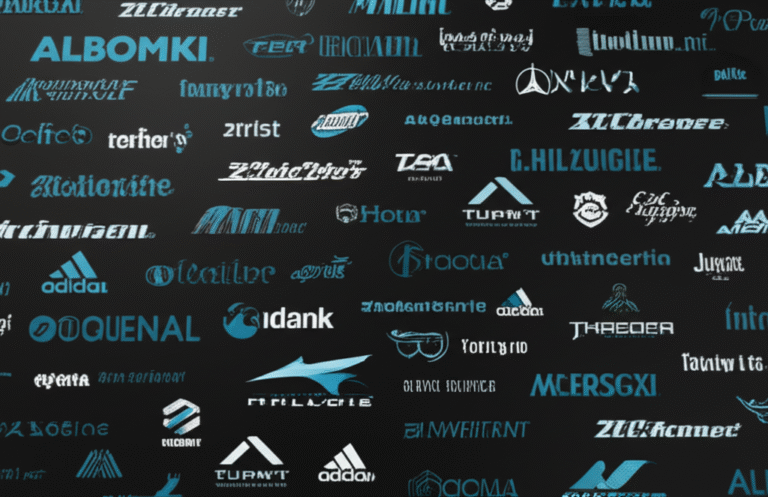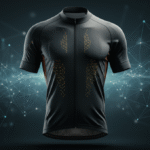Support our educational content for free when you purchase through links on our site. Learn more
What Is the World’s Largest Athletic Apparel Company? 🏆 (2025)
Ever wondered who truly rules the global athletic apparel game? Spoiler alert: it’s not just about flashy logos or celebrity endorsements. The world’s largest athletic apparel company has crafted an empire built on innovation, culture, and jaw-dropping revenue numbers that leave competitors in the dust. From humble beginnings in a small Oregon town to becoming a multi-billion-dollar powerhouse, this brand’s story is as inspiring as the athletes who wear its gear.
But what exactly makes this company the undisputed king of sportswear? How do its products stack up in design, technology, and sustainability? And who else is challenging its throne? Stick around—because we’re about to unpack every detail, from iconic sneakers to cutting-edge performance apparel, plus the marketing magic and controversies behind the scenes. Ready to find out who’s leading the pack and why? Let’s dive in!
Key Takeaways
- Nike, Inc. is the world’s largest athletic apparel company, dominating with over $51 billion in annual revenue and a 27% global market share.
- Their success stems from innovative product technology, iconic marketing campaigns like “Just Do It,” and powerful athlete endorsements.
- Nike’s product lineup includes footwear, apparel, equipment, and digital fitness ecosystems, all rated highly for design and functionality.
- The company is pushing sustainability with initiatives like Move to Zero but still faces challenges in labor practices and environmental impact.
- Major competitors include Adidas, Puma, Under Armour, Lululemon, and New Balance, each with unique strengths.
- For those ready to upgrade their athletic gear, Nike offers a wide range of cutting-edge products available on Amazon, Walmart, and their official site.
Ready to gear up like a champion? The journey to athletic apparel supremacy starts here!
Table of Contents
- ⚡️ Quick Tips and Facts
- Unveiling the Undisputed Champion: Who Reigns Supreme in Athletic Apparel? 👑
- The Genesis of a Giant: Tracing the Roots of Athletic Apparel Dominance 🕰️
- The Secret Sauce: What Makes Them Number One in Sportswear? 🧪
- Beyond the Swoosh: A Deep Dive into Their Iconic Product Portfolio 👟👕
- Conquering Continents: Their Global Reach and Influence in Activewear 🌍
- The Playbook for Success: Business Strategies and Innovation in Athletic Apparel 📈
- Just Do It: The Power of Their Unrivaled Marketing Machine 📣
- Pushing Boundaries: The Science Behind Their Performance Gear 🔬
- Navigating the Hurdles: Controversies and Ethical Considerations 🤔
- The Contenders: Who Else is in the Race for Athletic Apparel Supremacy? 🥈🥉
- The Future of Fitness Fashion: Emerging Trends and What’s Next for Sportswear 🚀
- Your Gear, Your Performance: How to Choose the Best Athletic Apparel 🛍️
- Conclusion: The Enduring Legacy of an Athletic Apparel Empire 🏁
- Recommended Links: Dive Deeper into the World of Sportswear 🔗
- FAQ: Your Burning Questions About Athletic Apparel Giants Answered 🔥
- Reference Links: Our Sources for the Inside Scoop 📚
Quick Tips and Facts
Welcome to the ultimate deep dive into the world’s largest athletic apparel company! If you’re curious about who dominates the global sportswear scene, you’re in the right place. Before we lace up and sprint through the details, here are some quick hits to get you started:
- ✅ Nike, Inc. is the undisputed giant in athletic apparel, footwear, and equipment worldwide.
- ✅ Founded in 1964 by Bill Bowerman and Phil Knight, originally as Blue Ribbon Sports.
- ✅ Headquarters near Beaverton, Oregon, USA.
- ✅ 2024 revenue exceeds $51 billion, with a net income of about $5.7 billion.
- ✅ Owns iconic brands like Nike, Air Jordan, Converse, and Nike Golf.
- ✅ Famous for the Swoosh logo and the legendary slogan “Just Do It.”
- ✅ Sponsors top athletes like LeBron James, Serena Williams, and Cristiano Ronaldo.
- ✅ Leading innovation in sustainable sportswear with programs like Move to Zero.
- ✅ Faces controversies around labor practices but actively invests in social responsibility.
- ✅ Competes with Adidas, Puma, Under Armour, and others in a multi-billion-dollar market.
Want to know how Nike became the king of athletic apparel? Or how their products stack up against competitors? Keep reading — we’re just getting warmed up! For a broader perspective on the industry, check out our related article on How Many Athletic Apparel Brands Are There? Discover 50+ Game-Changers in 2025! 🏆.
Unveiling the Undisputed Champion: Who Reigns Supreme in Athletic Apparel? 👑
When it comes to athletic apparel, Nike, Inc. stands head and shoulders above the rest. With a market capitalization soaring past $160 billion and annual revenues topping $51 billion in 2024, Nike is the largest supplier of athletic shoes and apparel globally. But what does that really mean?
What Makes Nike the World’s Largest?
- Global Reach: Nike products are sold in over 190 countries.
- Diverse Portfolio: From running shoes to basketball gear, casual wear to high-tech performance apparel.
- Brand Power: The Swoosh logo is instantly recognizable worldwide.
- Innovative Edge: Constant R&D investment keeps Nike ahead in performance and style.
- Marketing Muscle: Legendary campaigns and athlete endorsements fuel brand loyalty.
Nike’s dominance is not just about numbers; it’s about cultural impact and innovation that resonates with athletes and casual wearers alike. Their ability to blend performance, fashion, and technology is unmatched.
The Genesis of a Giant: Tracing the Roots of Athletic Apparel Dominance 🕰️
Nike’s story began humbly in 1964 as Blue Ribbon Sports, a distributor for Japanese brand Onitsuka Tiger. Co-founded by Phil Knight and legendary track coach Bill Bowerman, the company transitioned to Nike, Inc. in 1971, named after the Greek goddess of victory.
Key Milestones
| Year | Event |
|---|---|
| 1964 | Blue Ribbon Sports founded |
| 1971 | Rebranded as Nike, Inc. with the Swoosh logo debut |
| 1972 | Launch of the “Moon Shoe” and Waffle Trainer |
| 1980 | Nike goes public |
| 1988 | Introduction of the iconic “Just Do It” slogan |
| 2003 | Acquisition of Converse |
| 2019 | Launch of “Move to Zero” sustainability initiative |
The founders’ vision was simple: create innovative, high-quality athletic footwear and apparel that empower athletes to perform their best. Over the decades, Nike’s relentless innovation and marketing genius transformed it into a global powerhouse.
The Secret Sauce: What Makes Them Number One in Sportswear? 🧪
Nike’s recipe for success is a blend of innovation, marketing, and global strategy. Let’s break down the key ingredients.
Market Share Mastery: Dominating the Global Athletic Wear Landscape 📊
Nike commands approximately 27% of the global sportswear market, dwarfing competitors like Adidas (about 15%) and Puma (around 4%). Their footwear segment alone accounts for nearly 65% of sales, with apparel making up 27%.
Revenue Rivers: Billions Flowing from Performance Gear 💰
In 2024, Nike reported:
| Metric | Amount (USD) |
|---|---|
| Revenue | $51.36 billion |
| Operating Income | $6.472 billion |
| Net Income | $5.7 billion |
| Total Assets | $38.11 billion |
This financial muscle allows Nike to invest heavily in product development, marketing, and sustainability.
Brand Value Brilliance: The Power of the Swoosh 🌟
Nike’s brand was valued at over $32 billion in 2020, making it the most valuable sports brand globally. The Swoosh logo and “Just Do It” slogan are cultural icons, symbolizing motivation and excellence.
Beyond the Swoosh: A Deep Dive into Their Iconic Product Portfolio 👟👕
Ready to see what makes Nike gear a favorite among athletes? Here’s our detailed rating table for Nike’s main product categories, based on design, functionality, innovation, and sustainability (scale 1-10):
| Product Category | Design | Functionality | Innovation | Sustainability | Overall |
|---|---|---|---|---|---|
| Footwear | 9.5 | 9.8 | 9.7 | 8.5 | 9.4 |
| Apparel | 9.0 | 9.2 | 9.0 | 8.7 | 8.9 |
| Equipment & Accessories | 8.5 | 8.8 | 8.6 | 7.5 | 8.3 |
| Digital Ecosystems | 8.0 | 8.5 | 9.0 | 8.0 | 8.4 |
1. Footwear: From Track to Street, The Sole of Innovation 🏃♀️
Nike’s shoes are legendary for blending performance and style. The Nike Air Max, ZoomX Vaporfly NEXT%, and Air Jordan lines are game-changers.
- Design: Sleek, modern, and often trendsetting.
- Functionality: Engineered for specific sports — running, basketball, soccer, and more.
- Innovation: Technologies like Flyknit, Zoom Air, and React foam improve comfort and speed.
- Sustainability: The Nike Grind program recycles old shoes into new products.
Athlete Insight: Our marathon runner swears by the Vaporfly NEXT% for shaving minutes off her race time!
2. Apparel: Dressing Athletes for Success and Style 👚
Nike’s apparel ranges from Dri-FIT performance wear to stylish athleisure.
- Design: Trendy yet functional, suitable for workouts and casual wear.
- Functionality: Moisture-wicking, breathable fabrics that keep you cool.
- Innovation: Use of recycled polyester and sustainable materials.
- Sustainability: Move to Zero aims to reduce carbon footprint in apparel production.
3. Equipment & Accessories: The Finishing Touches for Peak Performance 🎒
From backpacks to training gear, Nike offers a robust lineup.
- Design: Practical with a sporty edge.
- Functionality: Durable and lightweight.
- Innovation: Integration with digital tracking in some accessories.
- Sustainability: Increasing use of recycled materials.
4. Digital Ecosystems: Connecting Athletes in the Modern Age 📱
Nike’s apps like Nike Run Club and Nike Training Club offer personalized coaching and community.
- Design: User-friendly interfaces.
- Functionality: Tracks workouts, progress, and offers challenges.
- Innovation: Integration with wearables and smart devices.
- Sustainability: Promotes active lifestyles and reduces need for physical products.
Conquering Continents: Their Global Reach and Influence in Activewear 🌍
Nike’s footprint spans the globe, making it a truly international powerhouse.
Headquarters Hub: Where the Magic Happens 🏢
- Located in Beaverton, Oregon, the Nike World Headquarters is a sprawling campus blending innovation labs, design studios, and athlete training centers.
- The HQ is also a hub for sustainability initiatives and corporate social responsibility programs.
Manufacturing Footprint: Crafting Global Sportswear 🏭
- Nike outsources manufacturing to over 700 factories in 40 countries, primarily in Asia.
- The company emphasizes supply chain transparency and has made strides in improving labor conditions, though challenges remain.
Retail Empire: From Flagships to Online Stores 🛒
- Nike operates over 1,000 retail stores worldwide, including iconic flagships in New York, London, and Shanghai.
- Their direct-to-consumer (DTC) strategy has grown rapidly, with e-commerce sales surging, especially post-pandemic.
The Playbook for Success: Business Strategies and Innovation in Athletic Apparel 📈
Nike’s business acumen is as sharp as its product design.
Direct-to-Consumer (DTC) Drive: Owning the Customer Journey 🚀
- Nike’s DTC sales now represent over 40% of total revenue, allowing for better margins and direct customer engagement.
- The Nike app and website provide personalized shopping experiences.
Digital Transformation: The Future of Sportswear Retail 💻
- Investment in AI, AR, and virtual try-ons enhances customer experience.
- Partnerships with platforms like Amazon and Walmart expand reach.
Supply Chain Agility: Keeping the World Geared Up 🔗
- Nike’s supply chain is designed for flexibility, allowing quick responses to trends and disruptions.
- Use of data analytics optimizes inventory and reduces waste.
Just Do It: The Power of Their Unrivaled Marketing Machine 📣
Nike’s marketing is legendary, blending emotion, storytelling, and star power.
Athlete Endorsements: The Faces of Performance 🏆
- Nike sponsors elite athletes: LeBron James, Serena Williams, Cristiano Ronaldo, and many others.
- These partnerships boost credibility and inspire consumers.
Iconic Campaigns: Storytelling That Moves the World 🎬
- The “Just Do It” campaign, launched in 1988, remains one of the most effective slogans ever.
- Recent campaigns tackle social issues, such as the Colin Kaepernick ad, sparking global conversations.
Sponsorships: Fueling Sports from Grassroots to Global Stages 🏟️
- Nike supports major leagues like the NBA, NFL, and global events like the Olympics.
- They also invest in youth sports programs worldwide.
Ties with the University of Oregon: A Legacy of Innovation and Support 🦆
- Nike’s co-founder Bill Bowerman was a track coach at the University of Oregon.
- The university remains a testing ground for new products and innovation.
- Nike’s support includes scholarships, facilities, and research collaborations.
Pushing Boundaries: The Science Behind Their Performance Gear 🔬
Innovation is Nike’s heartbeat.
Research & Development: The Lab Where Innovation Lives 🧪
- Nike’s Innovation Kitchen in Oregon develops cutting-edge materials and designs.
- Technologies like Flyknit reduce waste by knitting uppers in one piece.
- The ZoomX foam enhances energy return for runners.
Sustainable Innovation: Gear for a Greener Planet 🌱
- The Move to Zero initiative aims for zero carbon and zero waste.
- Use of recycled materials in shoes and apparel is increasing.
- Nike Grind recycles old shoes into new products and surfaces.
Navigating the Hurdles: Controversies and Ethical Considerations 🤔
No empire is without its challenges.
Labor Practices: The Human Cost of Production 👷♀️
- Nike faced backlash in the 1990s over sweatshop labor allegations.
- Since then, they’ve improved transparency and auditing but still face scrutiny.
- Ongoing efforts include fair wages and safer working conditions.
Environmental Impact: Footprint on the Planet 🌎
- Manufacturing processes contribute to carbon emissions and waste.
- Nike is actively working to reduce its environmental footprint but has room to grow.
Social Responsibility Initiatives: Giving Back and Moving Forward 🤝
- Nike invests in community programs promoting physical activity and equality.
- Campaigns often highlight social justice and empowerment themes.
The Contenders: Who Else is in the Race for Athletic Apparel Supremacy? 🥈🥉
Nike’s throne is contested by several strong players. Here’s a quick rundown of the top challengers:
| Rank | Brand | Origin | 2022 Revenue (approx.) | Key Strengths |
|---|---|---|---|---|
| 1 | Adidas | Germany | $24.5 billion | European market leader, innovation |
| 2 | Puma | Germany | $6.2 billion | Fashion-forward, collaborations |
| 3 | Under Armour | USA | $4.5 billion | Performance gear, athlete endorsements |
| 4 | Lululemon | Canada | $3.3 billion | Athleisure pioneer, premium quality |
| 5 | New Balance | USA | $4.1 billion | Heritage, comfort, running focus |
1. Adidas: The German Powerhouse with Three Stripes 🇩🇪
- Known for innovation and sustainability efforts.
- Strong presence in soccer and lifestyle markets.
- Collaborations with Kanye West (Yeezy) and Beyoncé boost street cred.
2. Lululemon: The Athleisure Innovator 🧘♀️
- Started with yoga wear, now a global athleisure leader.
- Focus on premium fabrics and community engagement.
- Rapidly expanding into men’s and performance categories.
3. Under Armour: The Performance-Driven Challenger 💪
- Founded in 1996, quickly rose with moisture-wicking apparel.
- Strong basketball and training gear presence.
- Signed stars like Stephen Curry to boost brand visibility.
4. Puma: The Feline Force in Sportswear 🐆
- Known for bold designs and celebrity collaborations.
- Growing in lifestyle and performance segments.
- Sustainability initiatives gaining momentum.
5. New Balance: Balancing Heritage and Innovation 👟
- Focus on running shoes with a loyal following.
- Made-in-USA and UK manufacturing appeal to quality-conscious consumers.
- Expanding into lifestyle and casual wear.
The Future of Fitness Fashion: Emerging Trends and What’s Next for Sportswear 🚀
The athletic apparel industry is evolving fast. Here’s what’s on the horizon:
Hyper-Personalization: Tailoring Gear to You 🎯
- Customizable shoes and apparel using 3D printing and AI.
- Brands like Nike offer bespoke options through apps and stores.
Circular Economy & Upcycling: Fashion That Lasts and Gives Back ♻️
- Increased focus on recycling and reuse.
- Programs to take back old gear and transform it into new products.
Wearable Tech Integration: Smart Apparel for Smarter Workouts 🤖
- Sensors embedded in clothing to monitor biometrics.
- Partnerships with tech companies to enhance performance tracking.
The Blurring Lines: Athleisure’s Continued Reign 🛋️
- Comfort meets style as athletic wear dominates casual fashion.
- Collaborations with luxury designers and streetwear brands.
Your Gear, Your Performance: How to Choose the Best Athletic Apparel 🛍️
Choosing the right gear is like picking your teammates — they need to support your goals and style.
Step 1: Identify Your Activity and Needs
- Running? Look for lightweight, breathable shoes with cushioning.
- Gym workouts? Durable, flexible apparel with moisture-wicking fabrics.
- Casual wear? Athleisure that blends comfort and style.
Step 2: Consider Fit and Comfort
- Try on multiple sizes and styles.
- Check for stretch, seam placement, and breathability.
Step 3: Evaluate Brand Reputation and Sustainability
- Brands like Nike lead in innovation and sustainability.
- Read user reviews and expert opinions.
Step 4: Set a Budget and Shop Smart
- Invest in key pieces that last.
- Look for sales and official outlets.
CHECK PRICE on Nike products:
Ready to lace up and elevate your athletic wardrobe? Stay tuned for the conclusion where we wrap up the legacy and future of this unstoppable empire!
Conclusion: The Enduring Legacy of an Athletic Apparel Empire 🏁

After sprinting through the history, innovation, marketing genius, and global influence of the world’s largest athletic apparel company, it’s clear why Nike, Inc. holds the crown. From humble beginnings as Blue Ribbon Sports to a multi-billion-dollar empire, Nike’s blend of cutting-edge technology, iconic branding, and unmatched athlete partnerships has set the gold standard in sportswear.
Positives ✅
- Unrivaled innovation in footwear and apparel technology (Flyknit, ZoomX foam).
- Massive global footprint with a strong direct-to-consumer strategy.
- Powerful marketing campaigns that connect emotionally and culturally.
- Commitment to sustainability through Move to Zero and Nike Grind.
- Diverse product portfolio catering to elite athletes and everyday fitness enthusiasts.
Negatives ❌
- Ongoing labor practice controversies and supply chain challenges.
- Environmental impact still significant despite improvements.
- Premium pricing can be a barrier for some consumers.
Our Take at Athletic Brands™
Nike’s strengths far outweigh its challenges. If you’re serious about performance, style, and innovation, Nike gear is a solid investment that delivers on all fronts. Whether you’re a marathoner chasing personal bests or a casual gym-goer, Nike’s products offer the technology and comfort you need. Plus, their sustainability efforts show a company striving to improve, not just profit.
So, if you’re ready to elevate your athletic game, just do it—with Nike leading the way.
Recommended Links: Dive Deeper into the World of Sportswear 🔗
Ready to gear up? Here are some top picks and resources to explore:
Shop Athletic Apparel & Footwear
-
Nike Products:
Amazon | Walmart | Nike Official Website -
Adidas Gear:
Amazon | Walmart | Adidas Official Website -
Lululemon Athleisure:
Amazon | Lululemon Official Website -
Under Armour Performance Wear:
Amazon | Under Armour Official Website -
Puma Sportswear:
Amazon | Puma Official Website
Books to Elevate Your Sportswear Knowledge
-
Shoe Dog by Phil Knight — The memoir of Nike’s co-founder, a must-read for any sportswear enthusiast.
Amazon Link -
The Sports Gene by David Epstein — Explore the science behind athletic performance and gear.
Amazon Link -
Sustainable Fashion and Textiles by Kate Fletcher — Learn about eco-friendly innovations in apparel.
Amazon Link
FAQ: Your Burning Questions About Athletic Apparel Giants Answered 🔥

What are the top athletic apparel companies in the world?
The top athletic apparel companies include:
- Nike, Inc. (USA) — The global leader with a vast product range and innovative technologies.
- Adidas (Germany) — Known for its strong European presence and sustainability initiatives.
- Puma (Germany) — A fashion-forward brand with growing market share.
- Under Armour (USA) — Focused on performance gear and athlete endorsements.
- Lululemon (Canada) — The athleisure pioneer expanding rapidly.
These companies dominate due to their brand recognition, innovation, and global distribution. Nike leads with over $51 billion in revenue, nearly double Adidas’s $24.5 billion.
Read more about “The Ultimate Sports Brands A-Z Guide: 50 Must-Know Names for 2025 🏅”
How do athletic apparel companies contribute to sports sponsorship and endorsements?
Athletic apparel companies invest heavily in sponsorships and endorsements to:
- Build brand credibility by associating with elite athletes and teams.
- Drive consumer loyalty through aspirational marketing.
- Expand market reach globally via sports events and leagues.
Nike’s partnerships with stars like LeBron James and Serena Williams create powerful narratives that inspire consumers. Adidas sponsors major soccer teams and events, while Under Armour’s deal with Stephen Curry boosted its basketball presence. These collaborations often lead to signature product lines, enhancing sales and brand prestige.
What are the most popular athletic footwear brands among professional athletes?
Among pro athletes, the most popular footwear brands are:
- Nike: Dominates basketball, running, and soccer with models like Air Jordan, ZoomX Vaporfly, and Mercurial.
- Adidas: Preferred in soccer and running, with innovations like Boost cushioning.
- Puma: Gaining traction in soccer and lifestyle segments.
- New Balance: Favored by runners for comfort and heritage.
Athletes choose brands based on performance technology, sponsorship deals, and personal style. Nike’s continuous innovation and athlete support make it the go-to choice for many.
Read more about “Top 8 Best Sportswear Brands for Performance in 2025 ⚡”
Which athletic apparel company has the most significant market share in the global sports industry?
Nike holds the largest market share globally, commanding roughly 27% of the sportswear market. This dominance is due to:
- A broad product portfolio covering footwear, apparel, and equipment.
- Strong direct-to-consumer sales channels.
- Aggressive marketing and sponsorship strategies.
- Continuous innovation in product technology.
Adidas follows as the second largest with about 15%, while other players like Puma and Under Armour hold smaller shares but remain influential.
How is Nike addressing environmental and social responsibility concerns?
Nike has launched the Move to Zero initiative aiming for zero carbon emissions and zero waste. They use recycled materials in products and have programs like Nike Grind to recycle old shoes. On social fronts, Nike invests in community programs promoting equality and physical activity.
However, challenges remain in labor practices and supply chain transparency. Nike continues to work with partners to improve conditions and uphold ethical standards.
Reference Links: Our Sources for the Inside Scoop 📚
- Nike, Inc. Official Website
- Adidas Official Website
- Under Armour Official Website
- Puma Official Website
- Lululemon Official Website
- Nike Wikipedia Entry
- Marketing91: Best Sportswear Brands In The World: Top 15 List in 2025
- Statista: Leading Sportswear Companies by Sales
- Athletic Brands™ – Athletic Brand Guides
- Athletic Brands™ – Brand Spotlights
- Athletic Brands™ – Fashion and Athletic Crossover
Thanks for sticking with us through this marathon of athletic apparel insights! Ready to gear up and conquer your next workout? We’ve got you covered.




